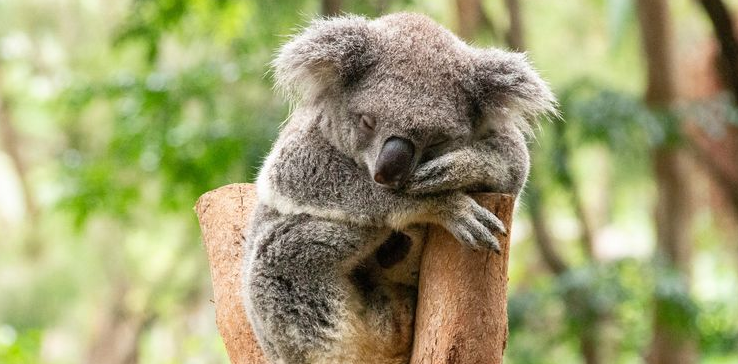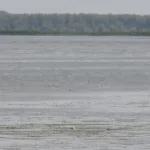Stress has often been described as the state of the animal when it has difficulties to adapt to environmental or physical constraints. Unlike domestic animals, wild animals are exposed to environmental stress, food deprivation, parasite infestation and numerous untreated diseases. In animals, stress is a biological and physiological response to external or internal challenges. It can be a natural and necessary reaction to certain stimuli. This stress response is characterized by the activation of the animal’s stress system, particularly the hypothalamic-pituitary-adrenal axis, which controls the release of stress hormones such as cortisol and adrenaline.
Stress in animals has a variety of causes some of which include environmental stressors like climate changes in temperature, rainfall patterns, extreme weather that can affect the availability of food, water, and shelter and other factors necessary for survival of an animal. Another factor that is mostly experienced in wild animals is acute stress due to presence of predators that usually involves fight-or flight mechanism leading to adrenaline rush causing changes in animal physiology. One more factor that contribute to animal stress is pollution, including noise, light, chemical pollutants, and plastic waste etc, has become one of the leading causes of stress in wildlife.
Noise pollution from traffic, aircraft, or construction, mining etc can disrupt communication, breeding, and feeding behaviors and mating behaviors in animals. Toxic pollutants in the water, air, and soil can also cause physical harm, altering reproductive success and survival rates and affect the overall health of wild animals. Due to scarcity or shortage of food and water or during periods of drought lead to stress due to competition for food with other individuals or species. Additionally human activities such as deforestation, urbanization, or agricultural expansion lead to habitat fragmentation which again becomes a serious cause of stress in wild animals.
As far as animal physiology is concerned the spread of diseases among wildlife populations or sudden disease outbreak can lead to stress due to the potential for widespread illness and death. Pathogens entering animal body can weaken their immune systems, making them more vulnerable to other stressors leading to serious health hazards. Orphaned, injured or sick, accidental wild animals that fear chance of predation or hunting easily fall into category of stressed animals through physical pain and impaired ability to find food for survival.
One more commonly occurring factor is interaction of humans with wild animals viz man animal conflicts, hunting, poaching, and the destruction of habitats through urbanization also become a source of stress for wild animals. The presence of humans, especially in areas where animals are not accustomed to human interaction, can lead to altered behaviors, abandonment of animal shelters or territories, also causes overall increase in stress levels affecting animal health. So there is a need for regulating tourism with sustainable tourism practices that limit human-wildlife interaction can help reduce the stress on animals in popular wildlife reserves and parks.
If we observe the impact of the stress on the wild animals it can range from immediate changes in behavior to long-term health problems that affect mental health, physical fitness and overall animal life. Repeated exposure to stress factors can cause the continuous release of stress hormones such as cortisol & adrenaline and can impair the animal’s immune systems, leaving them more vulnerable to infections and diseases, digestive problems, respiratory diseases and hormonal imbalances, affecting animal’s health and well being. In some species, it is observed that stress can suppress reproductive hormone production, leading to reduced fertility or even complete reproductive failure. Additionally, continuous mental stress alters the serotonin and dopamine levels in an animal’s brain. This, in turn, can cause repetitive and frequently harmful animal behavior that result in a loss of energy. Stressed animals may show signs of excessive vocalization, decreased appetite, and changes in sleeping patterns, poor grooming habits, hiding away from people or other animals, and aggression.
Tailpiece
Stress has often been described as the state of the animal when it has difficulties to adapt to environmental or physical constraints. Wild animals are frequently or constantly exposed to stressful stimuli, as they are all either predator or prey. Unlike domestic animals, wild animals are exposed to environmental stress, food deprivation, parasite infestation and numerous untreated diseases. Preserving and restoring natural habitats is one of the most effective ways to reduce stress in wildlife.
By reducing habitat fragmentation and protecting ecosystems from human encroachment, deforestations, poaching and hunting, animals can live in environments that meet their physical and behavioral needs, reducing stressors and promoting healthy wildlife. Another thing is reducing or minimizing incidences of man-wildlife conflicts through effective conservation strategies like habitat restoration, proper waste management, creating buffer zones and thus reduce stress. Educating and awareness about the impacts of human activities on wildlife is an important thing necessarily required for conservation and preservation of wildlife.
.
(Author is Veterinary officer, Department of Wildlife Protection Kashmir. Email:[email protected])








